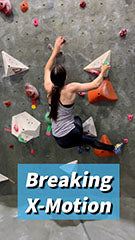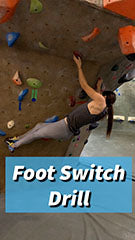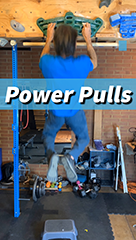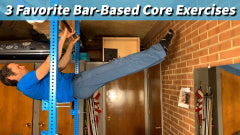Toes to Knows Climbing Academy

Academy: Strength Assessment
Climbing is a skill sport, but strength also plays a huge role in climbing success. As you progress up the grades in climbing, strength grows in importance. In this video,...
Academy: Strength Assessment
Climbing is a skill sport, but strength also plays a huge role in climbing success. As you progress up the grades in climbing, strength grows in importance. In this video,...

Academy: Breaking X-Motion
X-Motion is an excellent tool for staying in balance during 90% of your climbing movement. But there is the 10% case where the available holds don’t support X-Motion climbing and...
Academy: Breaking X-Motion
X-Motion is an excellent tool for staying in balance during 90% of your climbing movement. But there is the 10% case where the available holds don’t support X-Motion climbing and...

Academy: Foot Switch Drill
It’s often necessary to switch feet on small holds. By itself, switching feet is hard enough, but when you’re on an overhanging route and the foot is far off to...
Academy: Foot Switch Drill
It’s often necessary to switch feet on small holds. By itself, switching feet is hard enough, but when you’re on an overhanging route and the foot is far off to...

Academy: Dynamic Accuracy Drill
Accuracy during dynamic movements can be critically important. A good example is a dyno to a pocket. It’s really hard to hit the pocket in exactly the right spot to...
Academy: Dynamic Accuracy Drill
Accuracy during dynamic movements can be critically important. A good example is a dyno to a pocket. It’s really hard to hit the pocket in exactly the right spot to...

Academy: Power Pulls
Power is force applied quickly and it’s an important skill for hard rock climbing. The campus board is the classic way that climbers train power, but it’s not the right...
Academy: Power Pulls
Power is force applied quickly and it’s an important skill for hard rock climbing. The campus board is the classic way that climbers train power, but it’s not the right...

Academy: 3 Favorite Bar-Based Core Exercises
Shoulder strength integrated with core strength is helpful for climbers, especially if you like to climb steep routes. My three favorite bar-based core exercises to help build that integrated shoulder...
Academy: 3 Favorite Bar-Based Core Exercises
Shoulder strength integrated with core strength is helpful for climbers, especially if you like to climb steep routes. My three favorite bar-based core exercises to help build that integrated shoulder...
